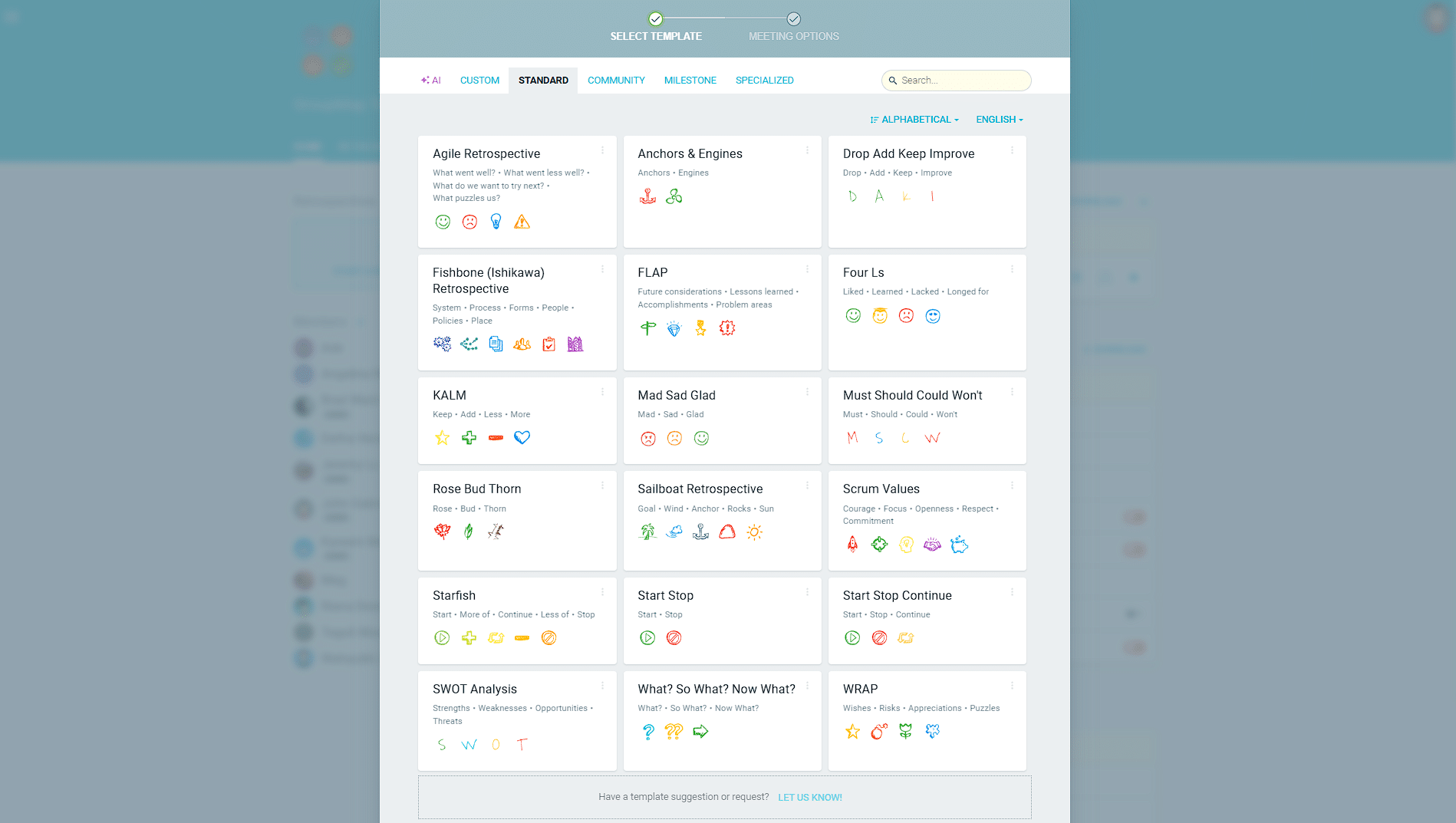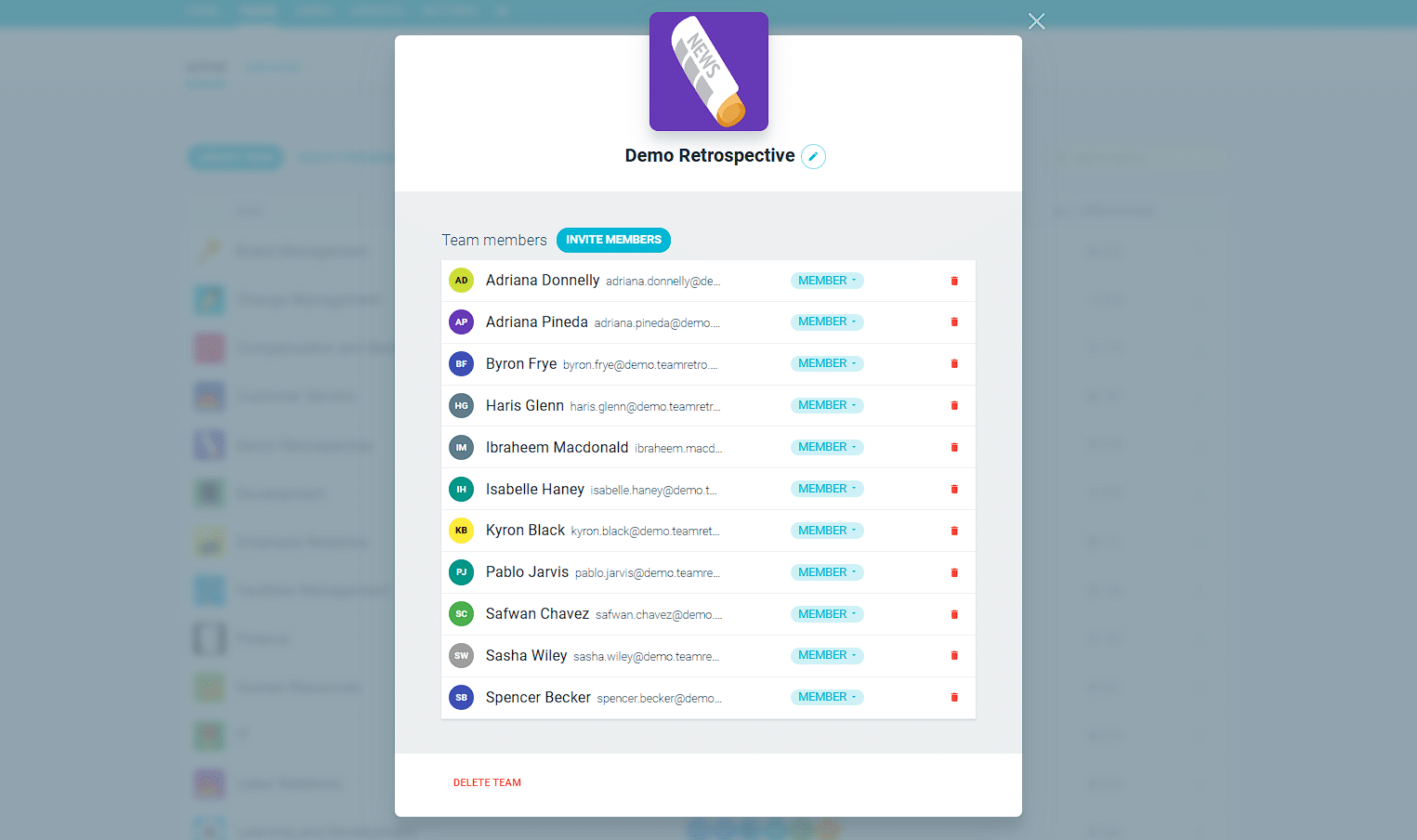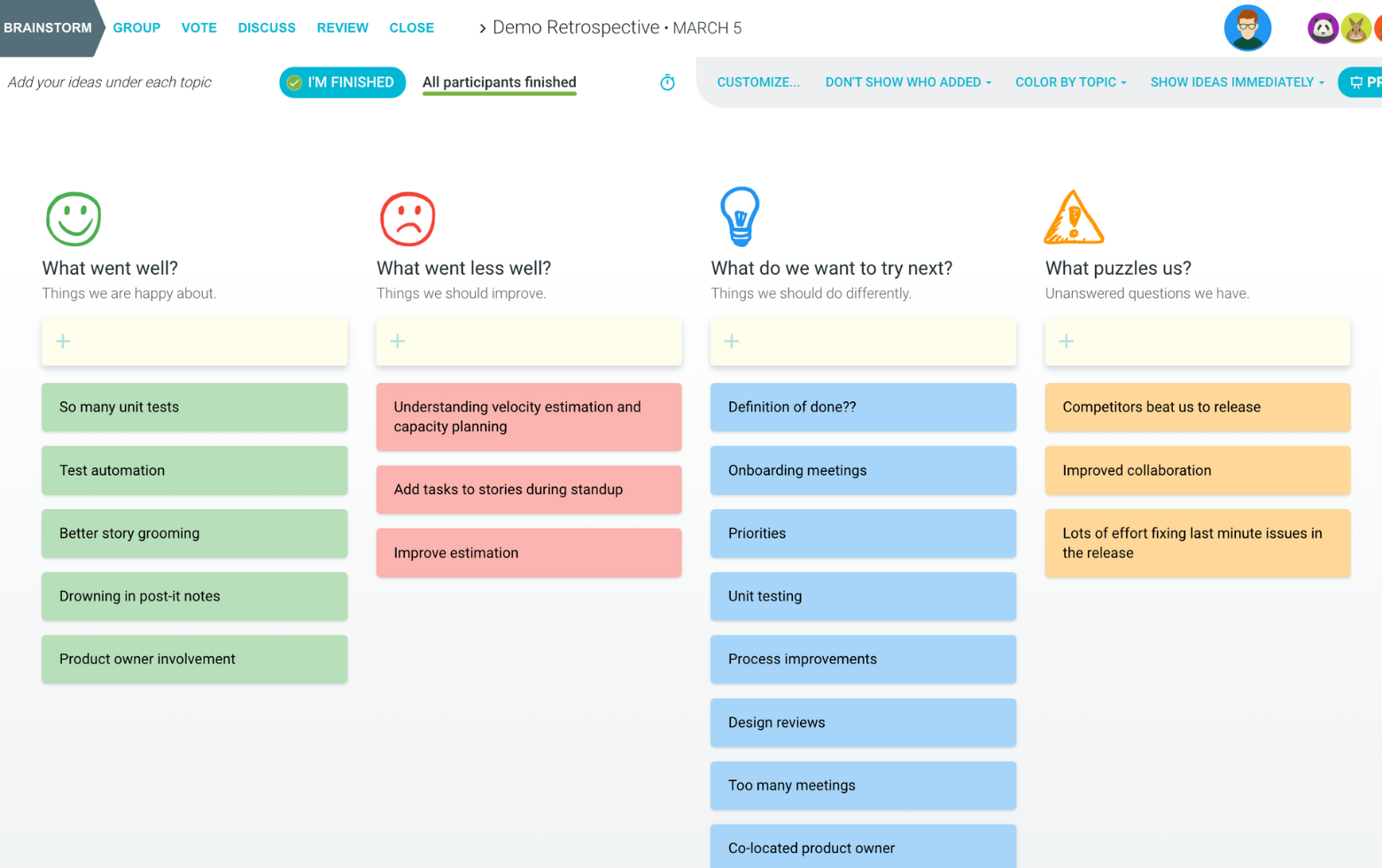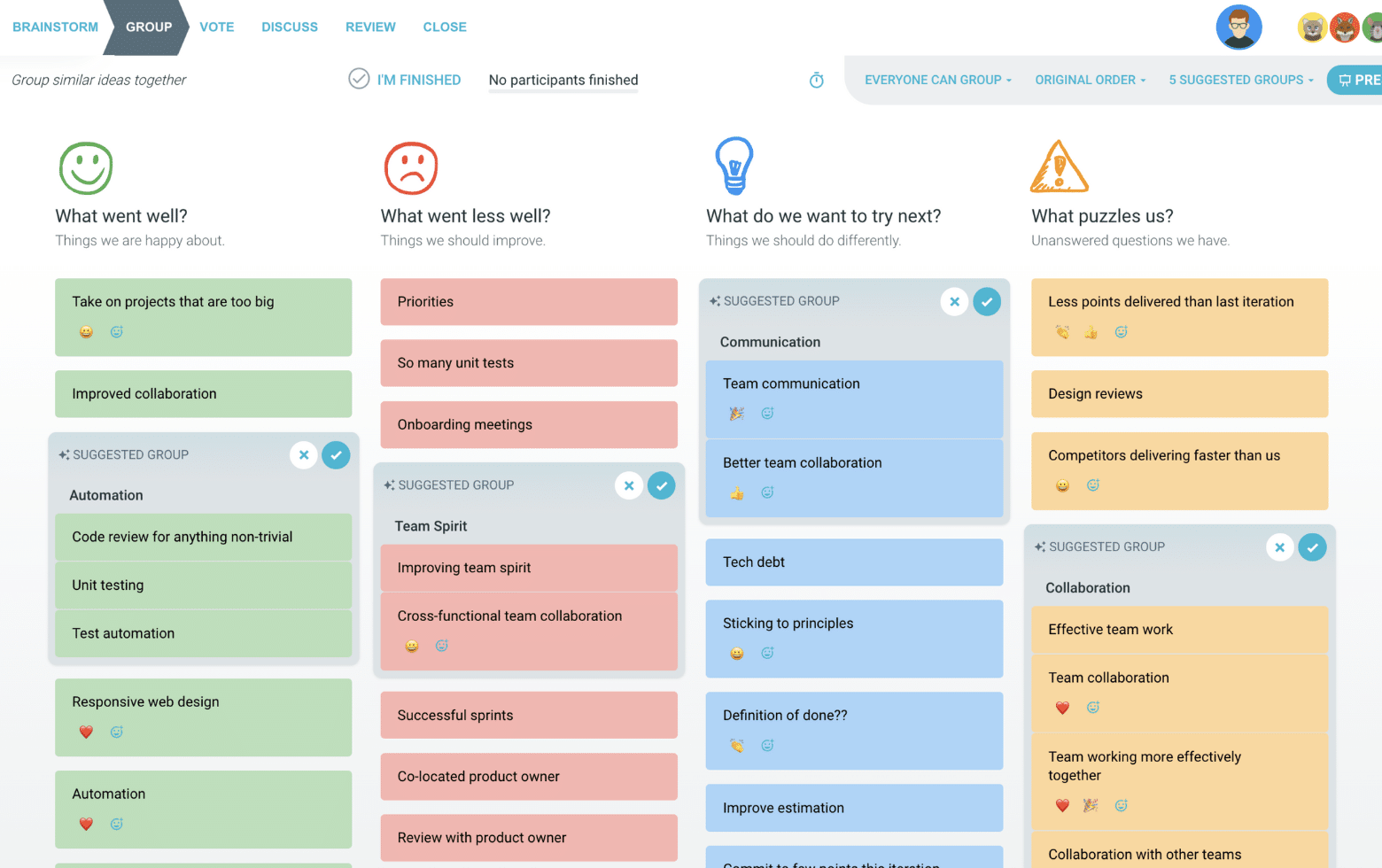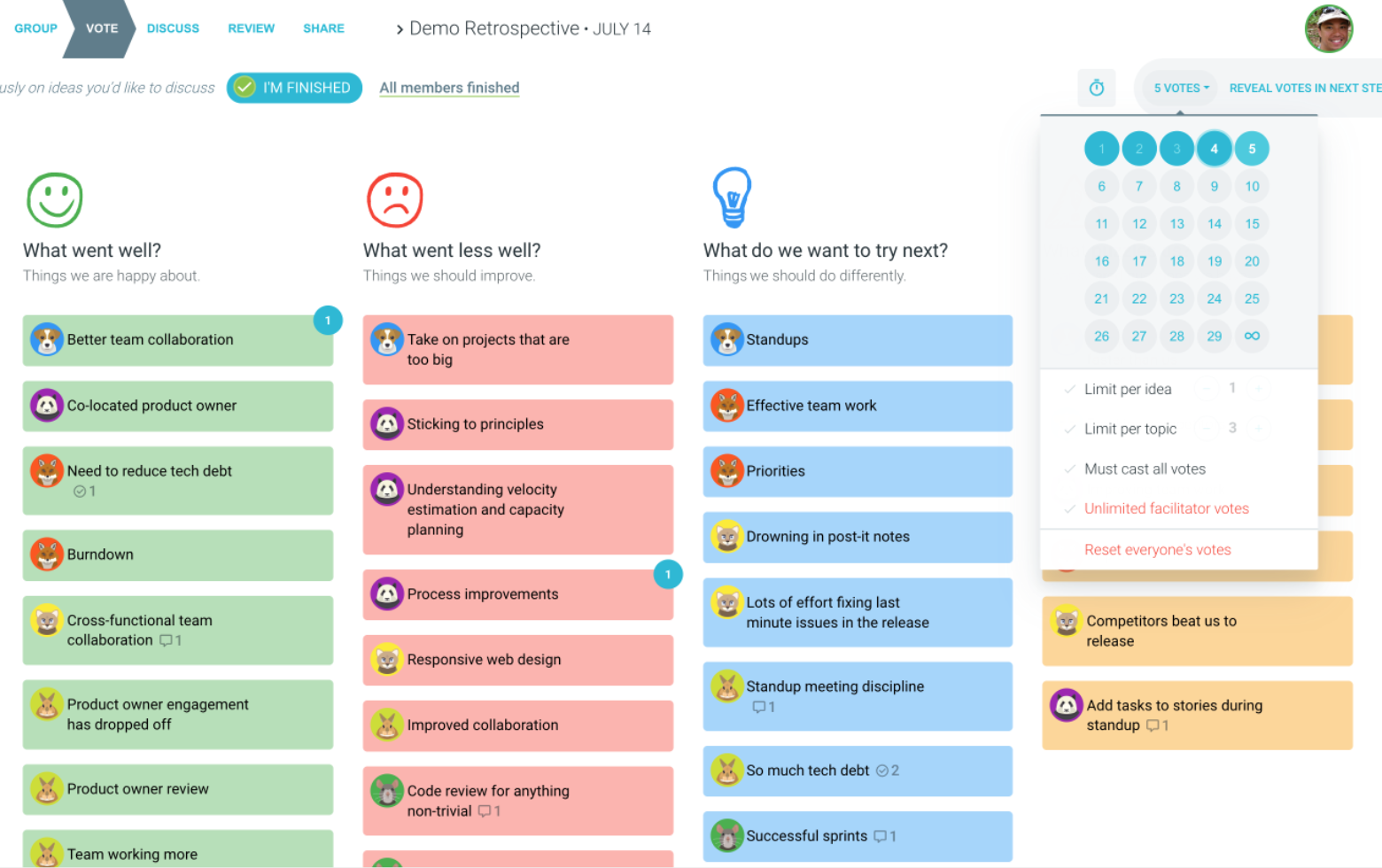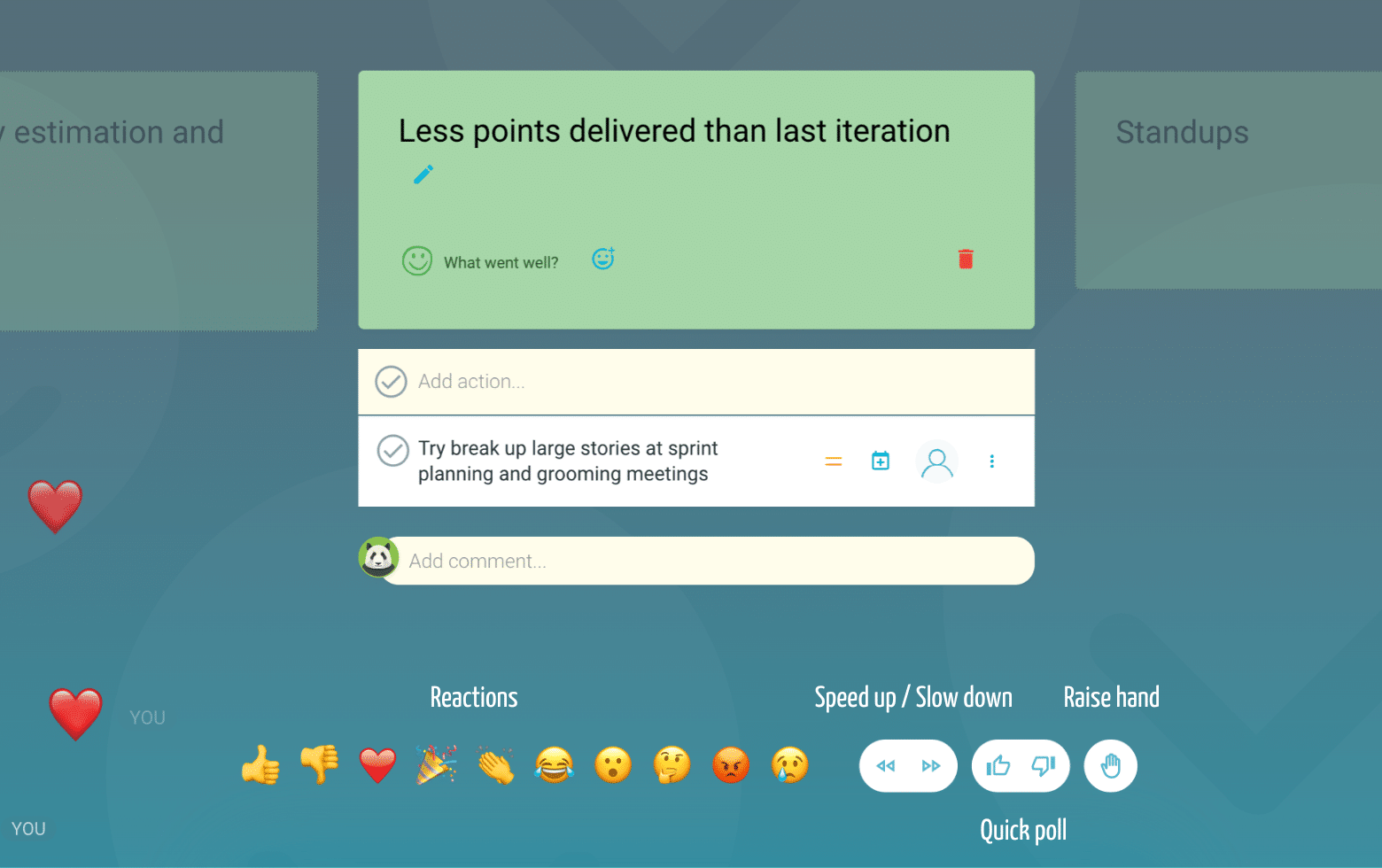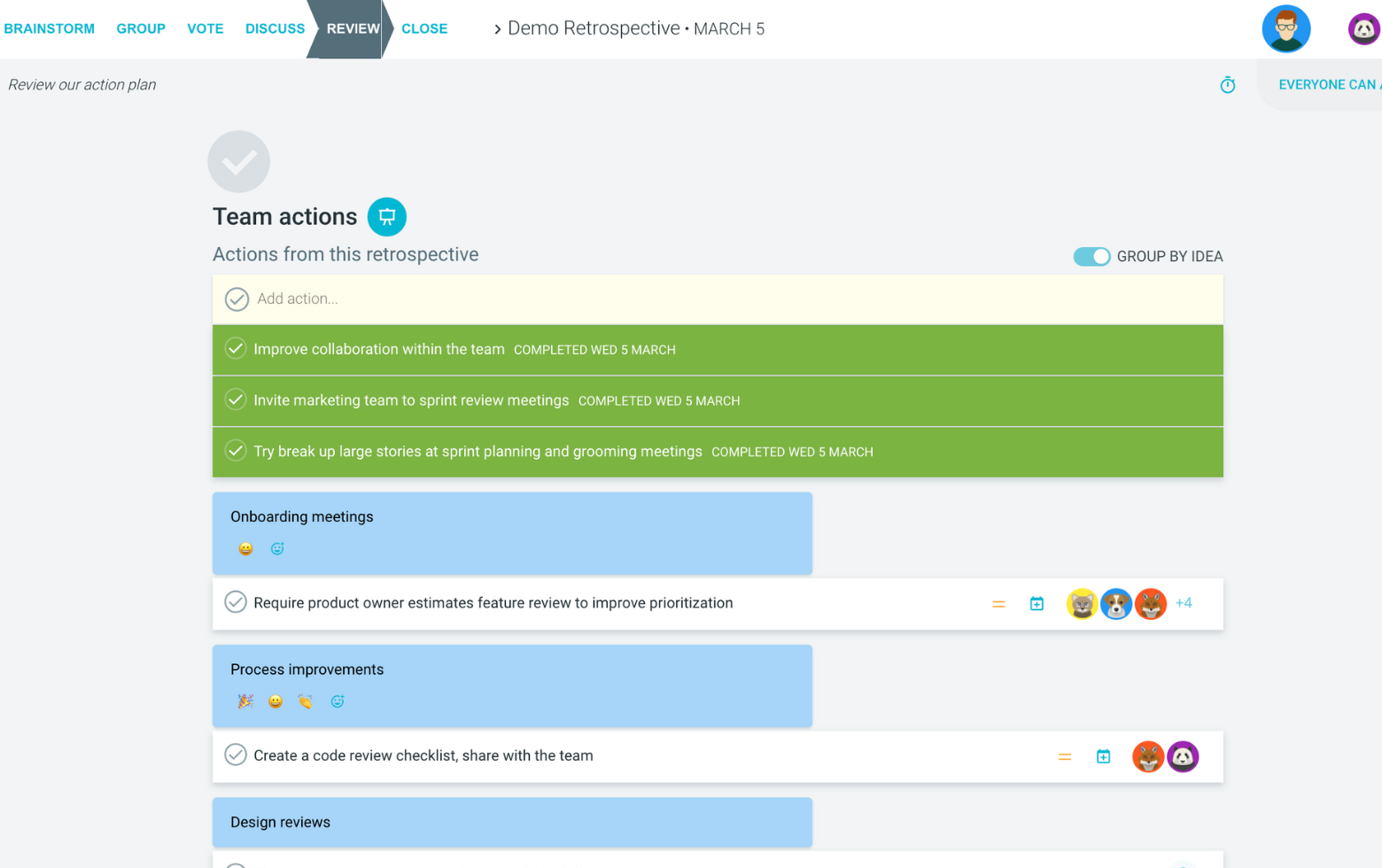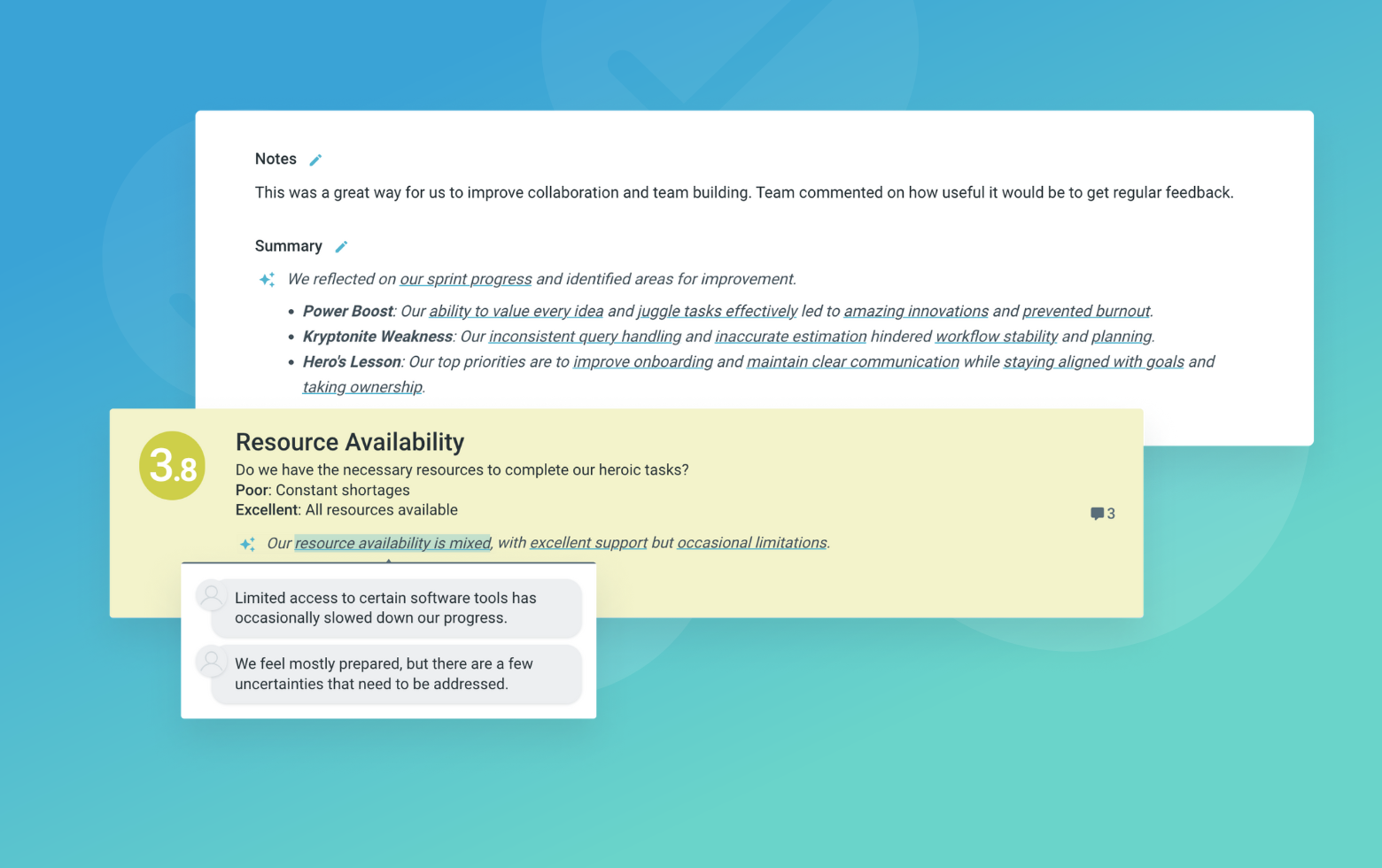The KALM retrospective is a structured approach that helps teams reflect on their work practices through four key dimensions: Keep, Add, Less, and More. This format encourages teams to maintain effective practices while identifying areas for improvement and optimization.
Unlike traditional start-stop-continue formats, KALM provides more nuanced options for change by separating increase and decrease decisions from binary choices. This allows teams to fine-tune their processes rather than making dramatic changes.
This retrospective format is particularly effective for teams seeking gradual, sustainable improvements. By focusing on what to keep and adjust, rather than what to completely eliminate, KALM promotes a more positive and constructive dialogue about team practices.
What is The KALM Retrospective
Keep
What should we keep doing?
Focus on identifying successful practices that contribute to the team's effectiveness. Encourage participants to provide specific examples of what's working well and why these elements should be preserved.
Add
What should we start doing?
Encourage innovative ideas and new approaches that could benefit the team. Focus on practical suggestions that can be implemented within the next iteration.
Less
What should we do less of?
Guide the discussion toward constructive criticism of processes or behaviors that may be hindering productivity. Focus on specific actions rather than personal criticism.
More
What should we do more of?
Focus on existing positive practices that could be amplified or expanded. Help the team identify opportunities to build upon current successes.
Suggested icebreaker questions
- What's one small change you made recently that had a positive impact?
- If you could instantly master one new skill that would help the team, what would it be?
Ideas and tips for your retrospective meeting
- Start by reviewing the previous retrospective's action items to maintain continuity
- Encourage participants to provide specific examples rather than general statements
- Use dot voting to prioritize items if you receive many suggestions
- Keep the focus on actionable improvements rather than complaints
- Ensure each category gets equal attention during the discussion
- End the session by creating concrete action items for the highest-priority items
.
How to run effective meetings with TeamRetro
Start Your Session in a Click
Log into TeamRetro and choose your template. Customise questions and the workflow to create your perfect retro for your team.
Create Your Team Easily – No Separate Accounts Needed
Brainstorm Individually – Free From Bias
Smart Grouping for Faster Insights
Fair, Flexible, and Fast Voting
Engage, React, and Capture Key Insights
Walk your team through ideas one by one with Presentation Mode. Stay in sync, spark real-time discussions, and capture feedback with comments, live reactions, and polls—all in one place.
Turn Ideas Into Action
Propose next steps with team buy-in, get AI-powered action suggestions, and keep everything in one place. Committed actions sync to your personal dashboard and integrate with your workflow tools—keeping you on track.
Save, Share, and Stay on Track
Get quick AI-powered summaries, add facilitator notes, and store retrospectives in your library for easy access. Schedule your next session and track published actions to keep your team accountable at the next retro.
Turn Team Data into Actionable Insights
Uncover trends, common themes, and key engagement metrics at a glance. Track sentiment shifts, analyze conversations, and monitor completed actions to drive continuous improvement.
